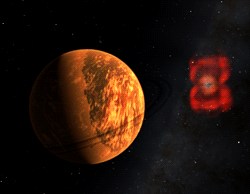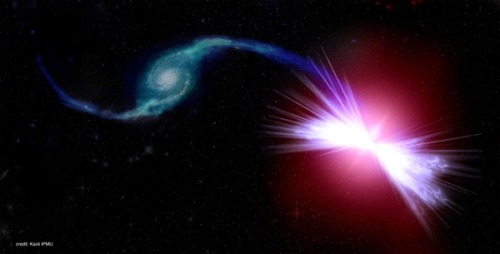Messier 1 - The Crab Nebula



Messier 1 - The Crab Nebula
Potentially Humanity’s First Historically Observed Supernova
The Crab Nebula is the first astronomical object identified with a historical supernova explosion. Around in the year 1054, Chinese astronomers identified a large bright object that suddenly and mysteriously appeared in the sky. The explosion was so bright that it was even visible during the day time.
700 years later the super nova remnant faded in brightness as it expanded and was nearly forgotten. The Super Nova Remnant was rediscovered in 1758 ( officially re-recorded) by Charles Messier while he was creating a catalog of mysterious objects that looked like comets but were not.
We now know that the beautiful Crab Nebula is the magnificent result of the death of a star, which was unknown to Charles Messier and the Chinese Astronomers that discovered the Object. Now, thanks to space telescopes such as Hubble and Chandra, we can image the Nebula in great detail. The bottom left image is of a small region of the Crab Nebula. It shows “Rayleigh–Taylor instabilities in its intricate filamentary structure” and gives scientists a better understanding of the death of stars. The image to the bottom left shows combined visible light data from Hubble and x-ray data from Chandra.
Credit: NASA/Hubble/Chandra
More Posts from Space-and-stuff-blog1 and Others

Scheelite with Pink Apatite on Muscovite
Locality: Mt Xuebaoding, Pingwu Co., Mianyang Prefecture, Sichuan Province, China.

Gateway to the Unknown Arches National Park, UT Credit: Jeff Berkes


Not cars but…
X-57 Electric Plane (nicknamed Maxwell). NASA has announced an experimental electric airplane called the X-57, which could reduce flight times and carbon emissions for passenger planes in the future. The plane, which will test the space agency’s new propulsion technology, is nicknamed after James Clerk Maxwell, the 19th century Scottish physicist who worked in the field of electromagnetism. The space agency’s Scalable Convergent Electric Propulsion Technology Operations Research project plans to build the plane by modifying the existing Italian-designed Tecnam P2006T twin-engine light aircraft. The X-57 will use a long skinny wing embedded with 14 electric motors. Twelve of the motors will be positioned on the leading edge of the plane for take offs and landings, while the larger motor on each wing tip will be used while at cruise altitude. It will be powered only by batteries, eliminating carbon emissions altogether. NASA hopes to demonstrate that X-57 technology could benefit travellers by reducing journey times, aircraft noise and fuel usage, as well as reducing operational costs for small airplanes by as much as 40%. While fuel-powered planes typically need to fly slower in order to get the best fuel efficiency, electric propulsion could help to tackle this problem, according to the space agency. X-57 is part of NASA’s decade-long New Aviation Horizons initiative, which will see it develop as many as five larger X-Planes with the aim of eventually producing them commercially.
source
![Auroras On Jupiter [NASA/ESA Hubble]](https://64.media.tumblr.com/3c398bbe2f14958639a930dd0317b628/tumblr_o9mooygKxP1qd479ro1_500.gif)
Auroras on Jupiter [NASA/ESA Hubble]



Afraid of Global Warming? Well, now there’s Galactic Warming from our dear friends, those super-massive black holes lurking just about everywhere a galaxy has sprouted up.
These wacky systems are so extreme as to completely skip out of many generations of new stars, leaving a severe stellar age gap in these galaxies, given an entirely new class called “red geysers”.
[First two images are gifs from “Space Engine”, the second is a rendering of the red geyser Akira galaxy sapping off of Tetsuo, it’s neighbor ]
-
 busbyway liked this · 1 year ago
busbyway liked this · 1 year ago -
 ohfallingstar reblogged this · 6 years ago
ohfallingstar reblogged this · 6 years ago -
 arte-et--marte reblogged this · 7 years ago
arte-et--marte reblogged this · 7 years ago -
 nourbenissa7 reblogged this · 7 years ago
nourbenissa7 reblogged this · 7 years ago -
 assesandspace reblogged this · 7 years ago
assesandspace reblogged this · 7 years ago -
 love-animalsssss-blog reblogged this · 8 years ago
love-animalsssss-blog reblogged this · 8 years ago -
 honeybug99-blog liked this · 8 years ago
honeybug99-blog liked this · 8 years ago -
 alohomorae reblogged this · 8 years ago
alohomorae reblogged this · 8 years ago -
 cristaldephoenix reblogged this · 8 years ago
cristaldephoenix reblogged this · 8 years ago -
 cristaldephoenix liked this · 8 years ago
cristaldephoenix liked this · 8 years ago -
 poitier2 liked this · 8 years ago
poitier2 liked this · 8 years ago -
 lucky7saint liked this · 8 years ago
lucky7saint liked this · 8 years ago -
 teotorriate-blog reblogged this · 8 years ago
teotorriate-blog reblogged this · 8 years ago -
 jsgaine-blog reblogged this · 8 years ago
jsgaine-blog reblogged this · 8 years ago -
 theoldsmelly liked this · 8 years ago
theoldsmelly liked this · 8 years ago -
 soulless-blunder liked this · 8 years ago
soulless-blunder liked this · 8 years ago -
 interegnum reblogged this · 8 years ago
interegnum reblogged this · 8 years ago -
 cheesewhizexpress reblogged this · 8 years ago
cheesewhizexpress reblogged this · 8 years ago -
 kabukichou liked this · 8 years ago
kabukichou liked this · 8 years ago -
 classicalastro reblogged this · 8 years ago
classicalastro reblogged this · 8 years ago -
 carlos13908 liked this · 8 years ago
carlos13908 liked this · 8 years ago -
 rosescarves liked this · 8 years ago
rosescarves liked this · 8 years ago -
 schlattandcompany liked this · 8 years ago
schlattandcompany liked this · 8 years ago -
 bikerdude51 liked this · 8 years ago
bikerdude51 liked this · 8 years ago -
 m7md3ashoor reblogged this · 8 years ago
m7md3ashoor reblogged this · 8 years ago -
 herbert12-blog1 liked this · 8 years ago
herbert12-blog1 liked this · 8 years ago -
 andnightsbrightdays reblogged this · 8 years ago
andnightsbrightdays reblogged this · 8 years ago -
 all-things-pretty96 reblogged this · 8 years ago
all-things-pretty96 reblogged this · 8 years ago -
 moonskyhigh-blog reblogged this · 8 years ago
moonskyhigh-blog reblogged this · 8 years ago -
 mavka-inthewoods liked this · 8 years ago
mavka-inthewoods liked this · 8 years ago -
 fulminius-blog liked this · 8 years ago
fulminius-blog liked this · 8 years ago -
 kissingroses22 reblogged this · 8 years ago
kissingroses22 reblogged this · 8 years ago
Just Space, math/science and nature. Sometimes other things unrelated may pop up.
119 posts









